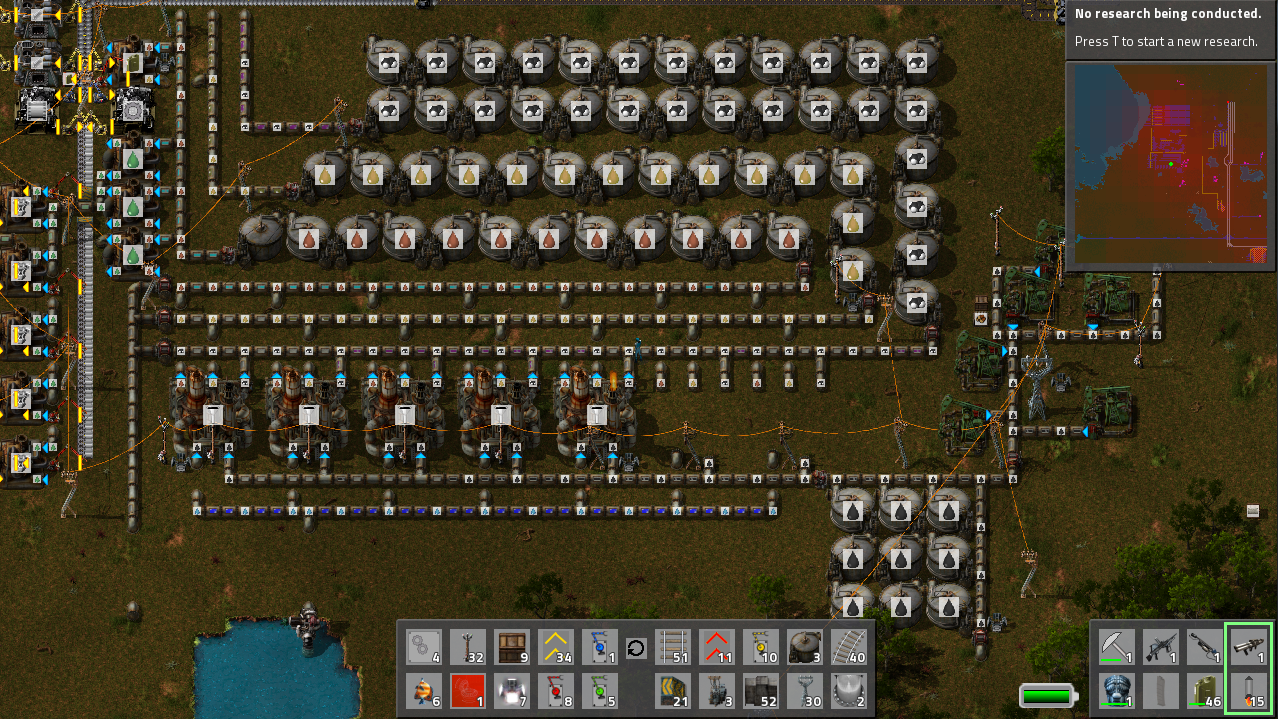the parallel pipes problem
Posted: Wed Feb 26, 2014 3:17 pm
Hi there
I was thinking of a simple solution to the problem with the pipes sticking to each other, making it impossible to have two parallel pipes without using tunnels all the time. I don't like the idea of having lots of different pipe elements, like curves and T-crossings, because that makes the building process complicated and fills up your inventory. I, however had an idea that only needs one type of pipe element, just like now.
The new pipe element has a fixed direction, so it can be rotated. however, it doesn't have a fixed direction like the belts, so it has just two possible orientations, horizontal or vertical. Every element has two ends and two sides.
when placed, the pipe element follows these rules for connecting to other pipe elements:
1. the ends will connect to other ends directly next to them
2. if one of the ends doesn't get connected with rule 1, it will look for neigbouring ends pointed at the sides of the current element. If it finds one it will connect and thus build a curve. If it finds an end on both sides, it connects to both, forming a T-intersection
3. If it's still not connected to anything, it will also connect to a side directly in front of the end of the current element. It will, however, never connect side to side.
If I thought it through correctly, this should allow for parallel pipes in mostly any layout you wish. For a complicated layout you just might have to play around a little with the orientation of the pipe elements.
I was thinking of a simple solution to the problem with the pipes sticking to each other, making it impossible to have two parallel pipes without using tunnels all the time. I don't like the idea of having lots of different pipe elements, like curves and T-crossings, because that makes the building process complicated and fills up your inventory. I, however had an idea that only needs one type of pipe element, just like now.
The new pipe element has a fixed direction, so it can be rotated. however, it doesn't have a fixed direction like the belts, so it has just two possible orientations, horizontal or vertical. Every element has two ends and two sides.
when placed, the pipe element follows these rules for connecting to other pipe elements:
1. the ends will connect to other ends directly next to them
2. if one of the ends doesn't get connected with rule 1, it will look for neigbouring ends pointed at the sides of the current element. If it finds one it will connect and thus build a curve. If it finds an end on both sides, it connects to both, forming a T-intersection
3. If it's still not connected to anything, it will also connect to a side directly in front of the end of the current element. It will, however, never connect side to side.
If I thought it through correctly, this should allow for parallel pipes in mostly any layout you wish. For a complicated layout you just might have to play around a little with the orientation of the pipe elements.

